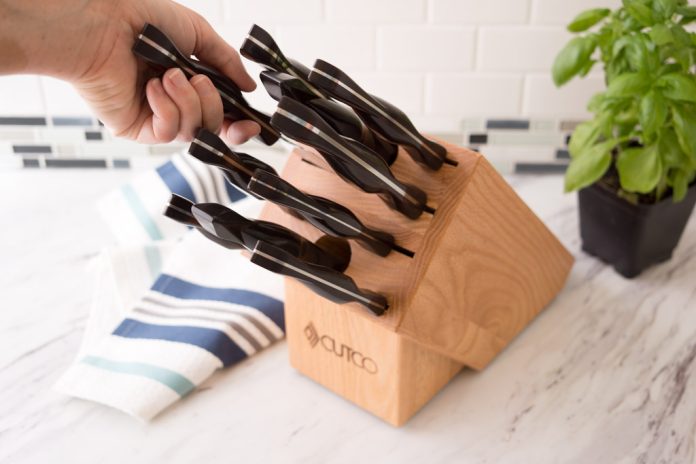Knives are essential tools in the kitchen and for outdoor activities, but they can also be dangerous if not handled properly. Whether you’re a professional chef or a home cook, it’s important to follow proper knife safety techniques to prevent accidents. In this article, we’ll explore some tips for proper knife handling and use.
1. Keep Your Knife Sharp
A sharp knife is safer than a dull one. A dull knife requires more force to cut, which can increase the likelihood of slips and accidents. Use a sharpening stone or a honing rod to keep your knife sharp.
2. Hold Your Knife Properly
The proper grip can make a big difference in your knife skills and safety. Hold the handle of the knife with your dominant handraindrop damascus steel, and place your index finger on top of the blade for added control. Use your other hand to hold the food you’re cutting.
3. Cut Away From Your Body
Always cut away from your body to prevent injuries. Keep your fingers and hands out of the way of the blade. Use a cutting board to stabilize the food and prevent slips.
4. Use the Right Knife for the Job
Different knives are designed for different tasks. Use a chef’s knife for general chopping and slicing, a serrated knife for cutting bread, and a paring knife for peeling and trimming.
5. Keep Your Work Area Clean and Tidy
A cluttered work area can lead to accidents. Keep your work area clean and tidy, and use a non-slip cutting board to prevent slips.
6. Store Your Knives Properly
Proper storage can prevent damage to your knives and injuries. Store your knives in a knife block or on a magnetic strip, and keep them out of reach of children.
7. Never Catch a Falling Knife
If you drop your knife, never try to catch it. Step back and let it fall to the ground.
8. Use a Knife Only for Its Intended Purpose
Don’t use a knife for anything other than its intended purpose. Using a knife as a screwdriver or a can opener can damage the blade and lead to accidents.
9. Cut Slowly and Carefully
Take your time when using a knife. Rushing can lead to slips and injuries. Cut slowly and carefully, and concentrate on the task at hand.
10. Keep Your Knife Clean and Dry
Clean your knife after each use with soap and water, and dry it thoroughly to prevent rust and damage to the blade.
In conclusion, proper knife handling and use is essential for preventing accidents and injuries. Keep your knife sharp, hold it properly, use the right knife for the job, and always cut away from your body. Keep your work area clean and tidy, store your knives properly, and never catch a falling knife. By following these tips, you’ll be able to use your knife safely and effectively.
FAQs
- How often should I sharpen my knife? A: It depends on how often you use your knife. As a general rule, you should sharpen your knife every 3-6 months or when it starts to feel dull.
- Can I wash my knife in the dishwasher? A: It’s not recommended. Dishwashers can damage the blade and handle of your knife. Instead, wash your knife by hand with soap and water.
- What should I do if I cut myself while using a knife? A: Apply pressure to the wound with a clean cloth and seek medical attention if necessary.





